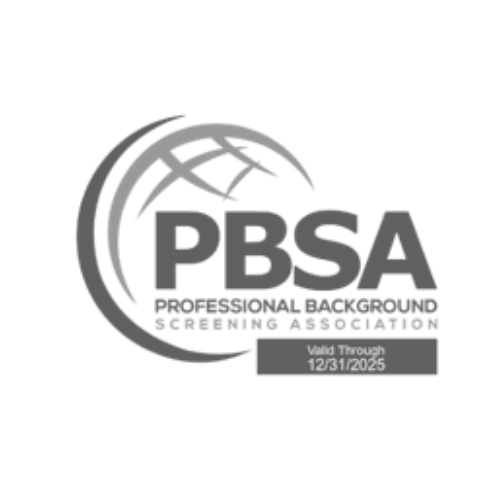Faster Doesn’t Mean Riskier—If You Know What You’re Doing
Hiring has always been a race against time. But in 2025, it’s more like a sprint. Candidates expect decisions within days, not weeks. Recruiters are working within tighter windows. And business leaders want new hires on the ground yesterday. Background verification, while critical to risk mitigation, often becomes the one piece of the hiring puzzle that slows everything down.
The good news? It doesn’t have to. HR teams can absolutely reduce background check turnaround time (TAT) without sacrificing accuracy or compliance. But doing so requires more than just working with a faster vendor. It requires a shift in mindset, smarter process design, and better use of technology.
This article walks through the practical ways HR leaders can cut verification delays without compromising standards—and why doing so isn’t just operationally smart, it’s a competitive necessity.
Why TAT Really Matters in 2025
Candidates today move quickly. The average job seeker actively pursues multiple roles and makes decisions based on momentum. If your organization takes five to seven business days to verify credentials, you’re likely losing top-tier talent to competitors who move faster.
But it’s not just about hiring velocity. Turnaround time directly affects onboarding, training cycles, and revenue. In industries like healthcare, delivery, tech support, or customer service, every extra day it takes to verify a hire is a day of lost productivity or delayed service delivery. That impact is measurable.
Reducing TAT, then, isn’t just a favor to your recruiters. It’s a business outcome tied to operational readiness, revenue, and cost control.
The Friction Points Slowing You Down
Before you can speed up, you need to know what’s dragging your current process. Most delays in background checks come down to four problem areas:
- Manual Information Collection: When candidates are asked to upload documents through email or paper forms, errors, delays, and back-and-forth follow.
- Lack of Verification Prioritization: Organizations often treat all hires the same, running deep checks on roles that don’t require them and vice versa. This wastes time and resources.
- Fragmented Tools: HR systems, ATS platforms, and background check vendors often don’t talk to each other, forcing recruiters to do duplicate data entry and chase updates manually.
- Vendor Constraints: Some verification partners operate with outdated technology, local-only reach, or limited service hours, making real-time verifications impossible.
What Leading HR Teams Are Doing Differently
To move faster without compromising on quality, progressive HR leaders are redesigning how verification fits into their hiring strategy. Here are the key shifts:
1. They Align Checks with Role Risk
Not every role needs the same level of scrutiny. A warehouse associate doesn’t need the same depth of civil litigation checks as a finance controller. By creating verification tiers based on role sensitivity, HR teams speed up hiring for high-volume roles without reducing scrutiny for high-risk positions.
Example: A global logistics firm segmented their hiring into four categories. Entry-level staff had identity, address, and criminal checks; managerial staff had financial and employment history added; C-suite candidates underwent full legal, reputational, and educational verification.
2. They Adopt Digital Onboarding and Consent
Smart HR teams aren’t waiting for a signed PDF or wet-ink form. They use mobile-friendly onboarding portals where candidates can:
- Digitally submit documents
- Consent to checks with one click
- Track status updates in real-time
This reduces missing information, speeds up submission, and improves candidate engagement.
3. They Integrate Their Tech Stack
The best-run HR departments ensure their ATS (like Greenhouse, Lever, or SAP SuccessFactors) is directly integrated with their background verification provider. That way:
- Candidate data auto-flows into the verification system
- Status updates are visible inside the ATS
- Duplicate tasks disappear
Less admin means more speed.
4. They Use National ID Databases Where Available
Governments around the world are digitizing ID systems. India has Aadhaar and DigiLocker. The US has SSN Trace. Many countries have tax ID or voting record integrations.
Smart HR teams choose verification partners who can instantly pull and match data from these official sources. This replaces hours of document validation with near-instant identity confirmation.
5. They Lean on Technology for Address Checks
Physical address verification is still one of the slowest parts of a background check—especially in countries where digital infrastructure is weak.
Modern solutions use geotagged mobile apps, AI-led utility database cross-checking, and document image recognition to complete address verification in 1-2 days instead of 5-7.
Some vendors also offer app-based employee self-verification with GPS-tagged video capture and timestamped document uploads.
6. They Track and Benchmark TAT Internally
Speed doesn’t happen by accident. Leading HR teams:
- Set clear turnaround benchmarks by check type (e.g., 24 hours for ID, 48 for employment history)
- Track vendor performance monthly
- Review delays caused by internal gaps
- Use dashboards to visualize and fix TAT issues in real time
This accountability keeps the entire hiring process moving predictably.
What You Can Do Now to Improve TAT
You don’t need to overhaul your entire system to see better results. Here’s a simple framework to start cutting turnaround time in the next 60 days:
Step 1: Audit Your Current Process
Where are the bottlenecks? What’s the average TAT per check type? What’s being delayed by your team vs. the vendor? Know your baseline.
Step 2: Categorize Roles by Risk
Create verification tiers. Align check depth with role impact and compliance requirements.
Step 3: Modernize Candidate Intake
Move away from manual collection. Set up mobile-friendly onboarding and consent workflows with your vendor.
Step 4: Ask Your Vendor the Right Questions
- Can you integrate with our ATS?
- What’s your average TAT by check type?
- How do you handle address verification?
- Do you support instant ID validation through government APIs?
Step 5: Monitor and Iterate
Set TAT KPIs. Share them with hiring managers. Create accountability for internal delays. Reward improvement.
Speed Isn’t a Shortcut. It’s a Strategy.
There’s a misconception in some HR circles that moving fast means you’re compromising on quality. But in reality, the organizations that move fastest are often the ones that have built the most robust systems. They’re not skipping steps. They’re eliminating friction.
If your current background check process is adding days (or worse, weeks) to hiring timelines, it’s not just costing you efficiency. It’s costing you talent. High performers won’t wait around. And in sectors where the competition is hiring within 72 hours, delay means defeat.
By redesigning your verification workflows around digital tools, risk-based logic, and integrated platforms, you can cut turnaround time dramatically while actually improving accuracy.
Speed doesn’t just help you fill jobs. It shows candidates you run a modern, serious, people-focused operation.
And that makes all the difference when they’re deciding whether to say yes.















